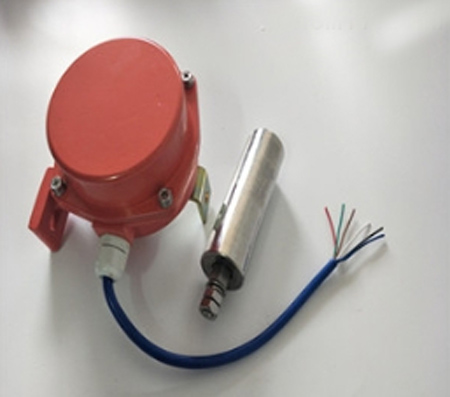
Product Overview:PB10-45 belt deviation switch is a protective device used to detect whether the belt conveyor deviates during operation. When the conveyor belt deviates from the normal track, the switch will quickly issue an alarm signal to prevent equipment damage and trigger a shutdown function to ensure the safe and stable operation of the conveyor system. This product is widely used in transportation systems in industries such as mining, metallurgy, power, chemical, and ports.
Main features:
High sensitivityPB10-45 is equipped with precision sensors that can accurately monitor the offset of the belt, ensuring quick response.
Sturdy structureAdopting high-strength cast aluminum shell, it has excellent impact resistance and corrosion resistance, and is suitable for harsh working environments.
MultifunctionalitySupports two functions: alarm and shutdown, which can be selected according to on-site needs and flexibly respond to different working conditions.
Easy to maintainSimple design, easy to install and debug, low daily maintenance workload, and long service life.
Technical parameters:
working principle:The PB10-45 belt deviation switch monitors the deviation of the belt during operation through a built-in high-precision sensor. When the offset angle of the conveyor belt exceeds the set value, the switch is immediately triggered, an alarm signal is issued, and it can automatically stop when needed to prevent equipment damage or production accidents. This device is usually linked with the control system of the conveyor to achieve automated management.
Application scenarios:
Installation and maintenance:
Installation location selectionInstall the PB10-45 belt deviation switch at key positions of the conveyor, such as the head, tail, or middle section, to ensure effective monitoring of belt deviation.
Wiring and DebuggingConnect the wires correctly according to the instructions and perform preliminary debugging. Adjust the detection angle and sensitivity to ensure that the switch can trigger an alarm or shutdown signal at the appropriate offset angle.
Regular inspection and maintenanceTo ensure long-term stable operation of the equipment, it is recommended to regularly check the working status of the equipment casing, wiring, and sensors, especially when used in harsh environments, and increase maintenance frequency.
Safety precautions:
Summary:PB10-45 belt deviation switch is a reliable conveyor protection device with high sensitivity, durability, and versatility. It can effectively monitor the running status of the belt, issue timely alarms and trigger shutdowns, ensuring the safety of equipment and personnel, and is suitable for various industrial conveyor systems.
1. What are the precautions for installing the PB10-45 belt deviation switch?
When installing the PB10-45 belt deviation switch, it should be selected at key positions where the belt is prone to deviation, such as the head, tail, or middle section. Ensure that the equipment is parallel to the belt and securely fixed to the mounting bracket. During installation, attention should also be paid to preventing displacement caused by vibration or external forces to ensure that the equipment can accurately detect the offset of the belt.
2. Is the PB10-45 belt deviation switch suitable for high temperature or corrosive environments?
The PB10-45 belt deviation switch adopts a cast aluminum alloy shell, which has good high temperature resistance and corrosion resistance, and is suitable for a temperature range of -20 ° C to+60 ° C. Its IP65 protection level gives it a certain degree of waterproof and dustproof ability, so it can work stably in high temperature or corrosive environments.
3. How to adjust the detection sensitivity of PB10-45 belt deviation switch?
The detection sensitivity of PB10-45 belt deviation switch can be achieved by adjusting the angle and trigger threshold of the internal sensor. During adjustment, power off operation is required to ensure safety. After adjustment, a test is conducted by simulating the state of belt deviation to determine whether the adjusted sensitivity meets the actual needs, and to ensure that the equipment can trigger an alarm or shutdown signal at the appropriate deviation angle.